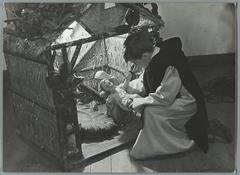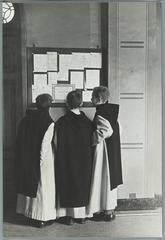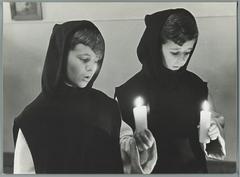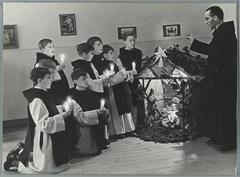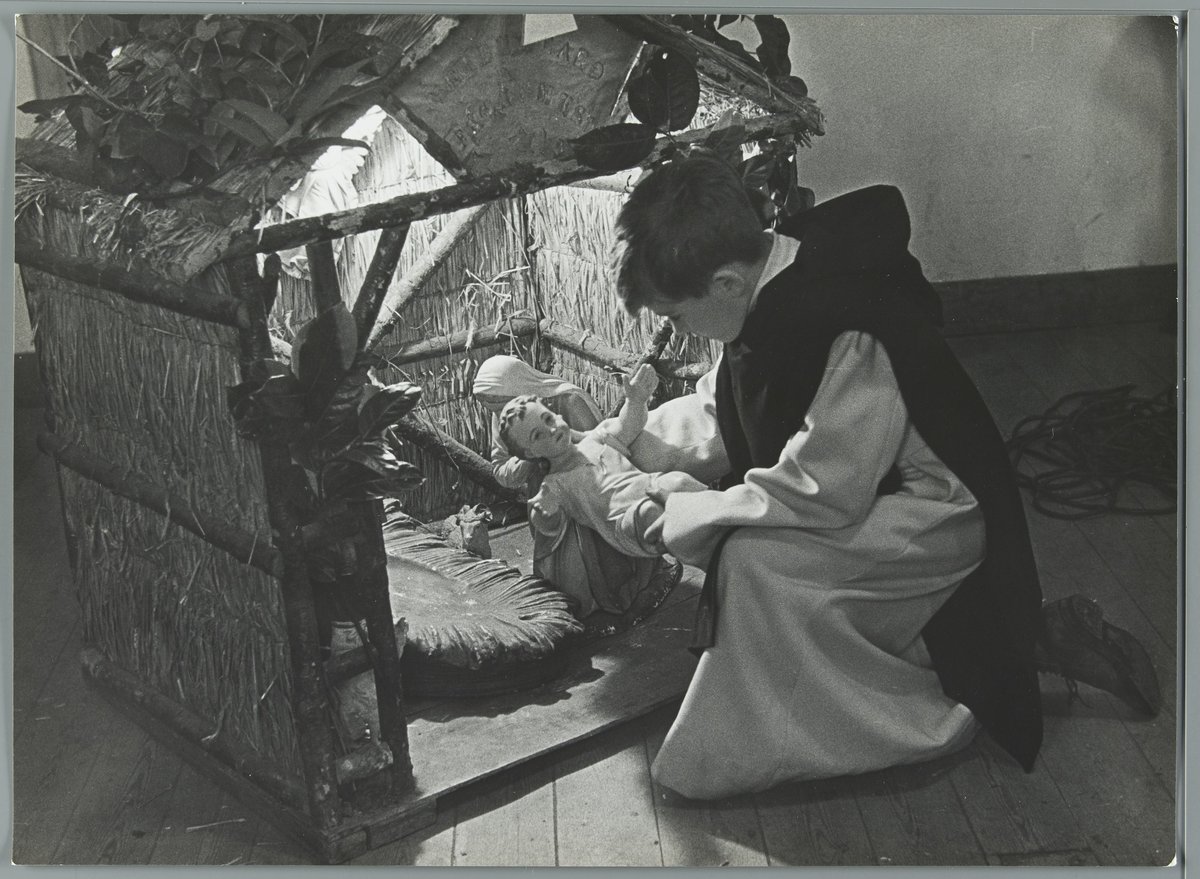
Saint-Andrew Abbey Bruges: Visiting Hours, Tickets, and Historical Sites Guide
Date: 14/06/2025
Introduction
Saint-Andrew Abbey (Sint-Andriesabdij Zevenkerken) in Bruges is a remarkable blend of centuries-old Benedictine monastic tradition, striking architecture, and peaceful spiritual retreat. Originally founded in the early 12th century and later revived at the turn of the 20th century, the abbey is a cultural and religious landmark of Flanders. Whether you’re drawn by its spiritual heritage, its unique seven-arched chapels, or its tranquil setting on the outskirts of Bruges, this guide provides comprehensive information to help you plan a rewarding visit. Here, you’ll find historical context, practical visitor details including tickets and opening hours, architectural highlights, travel tips, and answers to frequently asked questions.
For more in-depth insights and the latest updates, please refer to the official abbey website and Bruges tourism resources (Visit Bruges, Saint Andrew’s Abbey Zevenkerken).
Contents
- Introduction
- Historical Overview
- Architectural Highlights
- Religious and Educational Role
- Visitor Experience and Practical Information
- Special Events and Programs
- Frequently Asked Questions (FAQ)
- Conclusion
- References
Historical Overview
Origins and Medieval Development
Saint-Andrew Abbey traces its roots to a foundation charter signed in 1100 by Count Robert II of Flanders, following his vow during the First Crusade. The first monks arrived from Affligem Abbey in 1117, and by 1188, the priory became an independent Benedictine abbey. For centuries, the abbey played a significant religious and social role in medieval Bruges, until it suffered destruction during the French Revolution in 1796.
Suppression and Modern Revival
After the original abbey’s near-complete destruction, monastic life in Bruges lay dormant until 1899, when Dom Gérard van Caloen established a new Benedictine community in Sint-Andries. Supported by generous donations and the van Caloen family, the new abbey—named Zevenkerken (“Seven Churches”)—was constructed between 1899 and 1902. The abbey church, completed in 1935 and later elevated to a minor basilica, stands as a symbol of monastic renewal and spiritual continuity (SpeedyBooker, EGHN).
Architectural Highlights
The Seven Chapels Concept
The abbey’s most distinguishing feature is its seven chapels, each modeled after a celebrated pilgrimage church, including basilicas of Rome, Jerusalem, and other iconic Christian sites. Architect Rutgerus Rincklake, a Benedictine monk from Maria Laach Abbey, designed each chapel in a distinct style—Neo-Romanesque, Neo-Gothic, Neo-Renaissance, Neo-Byzantine, Russian, and Catacomb. This architectural diversity symbolizes the universal reach of the Church and offers a “pilgrimage in place” experience for visitors (EGHN).
Grounds and Setting
The abbey is set within tranquil parkland and mature woodlands donated by the van Caloen family. Pathways connect the church to the former van Caloen estate and the Benedictine convent of Notre-Dame de Béthanie. Beautifully maintained gardens and forest trails make the grounds ideal for peaceful walks and contemplation.
Artistic and Liturgical Elements
Inside, the church features colorful mosaics, stained glass windows depicting saints and scenes from Benedictine history, and high-quality liturgical furnishings. The chapels’ varied styles provide a unique educational and aesthetic journey, while the main nave’s acoustics support the abbey’s tradition of Gregorian chant (Liturgy and Architecture).
Religious and Educational Role
Monastic Life
Saint-Andrew Abbey is an active Benedictine monastery, with monks following the Rule of Saint Benedict—“Ora et Labora” (Pray and Work). The community’s daily rhythm is marked by the Liturgy of the Hours, including public services like Lauds, Vespers, and Compline. Visitors are welcome to join these prayers and experience the monastic atmosphere firsthand.
Spiritual Programs and Hospitality
The abbey offers spiritual retreats, workshops, and silent days for individuals and groups, regardless of religious background. The guesthouse provides accommodation for those seeking a deeper retreat experience, with opportunities to share meals with the monastic community.
Educational Mission
Since the early 20th century, the abbey has hosted a renowned secondary school—Collège de Zevenkerken—fostering academic excellence and holistic education. The abbey also supports theological and philosophical scholarship, offers lectures and seminars, and maintains a library of religious and historical texts.
Visitor Experience and Practical Information
Location and Access
- Address: Zevenkerken 4, 8200 Brugge, Belgium (Sint-Andries district)
- Getting There: Easily accessible by car (10 minutes from Bruges center), bicycle (scenic routes), or public transport (local buses from Bruges station).
Visiting Hours and Tickets
- Hours: Generally open daily from 9:00 AM to 6:00 PM. Hours may vary during religious festivals or special events—always check the official abbey website before your visit.
- Admission: Free entry to the church and grounds. Donations are appreciated. Guided tours are available by prior arrangement and may require a small fee.
Facilities
- Accessibility: The main church and grounds are wheelchair accessible, though some paths may be uneven. Contact the abbey in advance for detailed accessibility information.
- Restrooms: Available on-site.
- Bookshop: Sells religious literature, souvenirs, and locally produced goods.
- Dining: Bistro Benedictusheem and guesthouse dining (for retreatants).
- Guesthouse: Accommodation by prior reservation for spiritual retreats.
Visitor Guidelines
- Dress Code: Modest attire is required in the church and monastery.
- Photography: Permitted in most public areas, but may be restricted during services or in certain chapels.
- Etiquette: Silence is expected inside the church and during prayers. Please respect the privacy of the monastic community and students.
Special Events and Programs
- Liturgical Services: Daily Mass and Divine Office are open to visitors.
- Retreats and Workshops: Regularly scheduled for individuals and groups (advance booking required).
- Cultural Events: Occasional concerts, lectures, and exhibitions—check the events calendar on the abbey website.
Nearby Attractions
- Béthanie Convent: Adjacent Benedictine convent, accessible via the abbey grounds.
- Van Caloen Estate: Historic manor and parkland.
- Bruges City Center: Just a short trip away, offering world-class museums, medieval architecture, and canals.
- Loppem Castle & Damme: Other notable regional sites for further exploration (Traveler Bibles).
Frequently Asked Questions (FAQ)
Q: What are the visiting hours?
A: Generally 9:00 AM to 6:00 PM daily. Confirm on the official website before visiting.
Q: Is there an admission fee?
A: No, entry is free, but donations are welcomed. Guided tours may require a fee.
Q: Are guided tours available?
A: Yes, by prior arrangement for individuals or groups.
Q: Is the abbey accessible for people with disabilities?
A: Most public areas are accessible, but contact the abbey for specific needs.
Q: Can I participate in monastic prayers?
A: Visitors are welcome at public services, including Lauds, Vespers, and Compline.
Q: Is photography allowed?
A: Yes, in most public areas, but restrictions may apply during services.
Q: Is there parking available?
A: Yes, on-site parking is available for visitors.
Conclusion
Saint-Andrew Abbey in Bruges stands as a testament to the enduring vitality of Benedictine tradition, architectural innovation, and spiritual hospitality. Its seven chapels, vibrant monastic life, and tranquil setting make it a unique destination for visitors seeking history, culture, and reflection. With free admission, accessible facilities, and a wide range of spiritual and cultural programs, the abbey welcomes all.
For up-to-date visiting hours, ticket information, and event schedules, consult the official Saint-Andrew Abbey website and the Bruges tourism portal. Enhance your visit by downloading the Audiala app for guided audio tours and follow us on social media for news and inspiration.
Experience the living heritage of Bruges at Saint-Andrew Abbey—plan your visit today.
